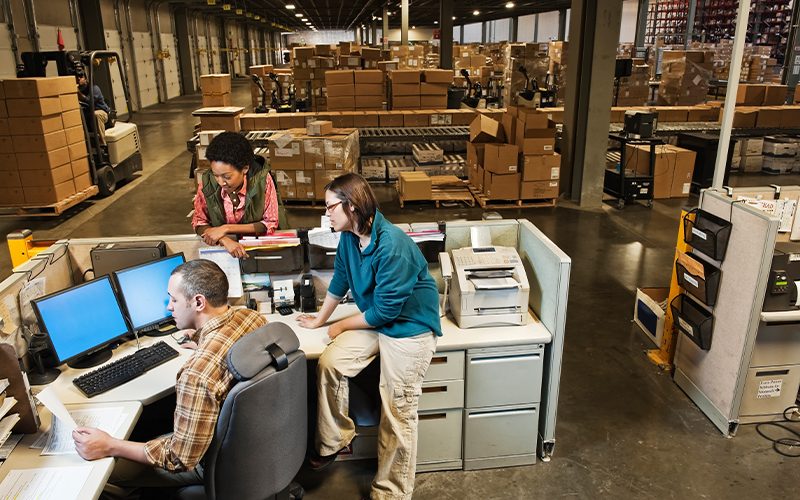Sourcing and Procurement
IoT as a Vital Enabler in Procurement
With technology taking center stage in business operations, IoT (Internet of Things) is now a phrase, which is heard very often. But what does it mean? In simple words, IoT refers to the “things” or devices like sensors, tags, system boards, and other types of technology that have Unique Identities (UIDs) embedded in them to enable communication and transmission of data.
In our daily life, these devices are an intrinsic part of both our personal and business environments. Household appliances used for lighting, heating, and cooling, wearables, smartphones, GPS and navigation devices, home security and our vehicles are a few of our personal devices. In a business context, we use devices such as tablets, servers, laptops, desktops, peripherals, and devices for construction, manufacturing, and networking.
In businesses, there are industry-specific use cases of IoT usage depending on their explicit functions and requirements for monitoring and reporting. Typical ROI (Return on Investment) on implementing such devices and applications can yield:
- Lower operations costs
- Enhanced productivity
- Optimized output
- Increased security
- Improved safety
- Better quality control
- Real-time tracking and monitoring
Here are a few areas in different industries that have recorded several benefits as a direct result of incorporating IoT into their processes:
- Manufacturing
- Retail
Installing sensors that capture and transmit the health of the hardware on manufacturing equipment is a good example of using IoT to prevent outages and downtime in production. Such devices further help ensure that the manufacturing equipment is within tolerance levels and sends alerts when parts are wearing out, thus avoiding system failures. Also, proactive monitoring ensures that spare parts and service can be accessed quickly to get production back online.
Many companies within the retail industry were early adopters of IoT and its many applications. It has been undergoing rapid innovations and enhancements including faster response times and increased access via the cloud and high-speed internet. GPS and RFID technologies help in the tracking of products through the entire end-to-end supply chain process (i.e., creating, picking, packing, shipping, delivery, etc.) whether its destination is your local retailer for pickup, your doorstep, or your company loading dock. Loss prevention teams also benefit from IoT as it enables them to detect and prevent the theft of goods with physical tracking and alerting or scanning systems.
Adding an edge to procurement with IoT
Procurement is a segment of the supply chain ecosystem that includes various business enablement functions such as category management, sourcing, buying, and purchasing goods and services. These functions all play a vital and integral role in the era of digital transformation and act as enablers in leveraging IoT when it comes to logistics, spend visibility, asset utilization and demand.
Purchasing management systems benefit from IoT as it gives them the ability to understand real-time inventory levels, visibility of the quantity needed for requisitioning and can even initiate purchase order releases to suppliers. Implementing IoT and related technologies helps the business and the procurement team understand the answers to the questions of “who, what, when, where, and how” regarding acquiring, managing, and disposing of goods and associated services.
Here are a few areas where IoT can prove to be beneficial in procurement:
- Enhancing supply chain visibility and collaboration
- Tracking of materials
- Inventory management
- Compliance and auditing
- Improve decision-making with predictive analytics
Equipping devices and vehicles with IoT breaks silos and enables teams to get precise and timely insights. This not only increases visibility in the supply chain but also helps them resolve any supply chain issues or bottlenecks arising due to any delays or congestions in the procurement process during transportation from manufacturer to consumers.
Often real-time tracking becomes crucial when procuring high-value, temperature-sensitive or perishable items. It necessitates installing GPS monitors in the vehicles and consignments to obtain real-time tracking of the shipment. Also installing advanced devices such as temperature sensors, can raise an alarm if the shipment is at an unsuitable temperature.
Implementing advanced IoT sensors in inventory and warehouses can help in accurate tracking, analysing exact inventory and stock levels as well as update the inventory tracking system in a timely manner thereby avoiding any delays or out-of-stock situations. The sensors can further raise alarms in case of low inventory.
When talking about compliance, practicing ESG guidelines have become a new priority for organizations. As a result, implementing IoT sensors can help in establishing quick, reliable, and cost-effective ways to ensure adherence to the best ESG compliance strategies and improve the decision-making process.
With predictive data analytics and spend analytics, procurement teams can make of use of collected data in making critical decisions in terms of designing and implementing business strategies. Additionally, combining IoT data with data from other sources can help businesses to not only better identify growth opportunities but also make the best use of them.
As with many technologies which involve data and its communication or transmission, security is a rising concern emphasizing the importance of safeguards against attacks and breaches. Companies such as Microsoft Azure and many others offer services to protect IoT infrastructures with a complete cloud solution, one that combines a constantly growing collection of integrated cloud services—analytics, machine learning, storage, security, networking, and web—with an industry-leading commitment to the protection and privacy of your data.
IoT is picking up speed and moving faster than most people anticipated, especially with supply chain issues and awareness during the pandemic. To support the rising adoption and further investment in technology, procurement will need access to the complete IoT framework, artificial intelligence, machine learning, and embedded technology. A McKinsey Global Institute study indicated that by 2025, the Internet of Things’ potential contributions to inventory management, supply chain management, and logistics might be worth between $560 billion and $850 billion per year. Thus, we see that embedding IoT in procurement processes will substantially enhance business value.






